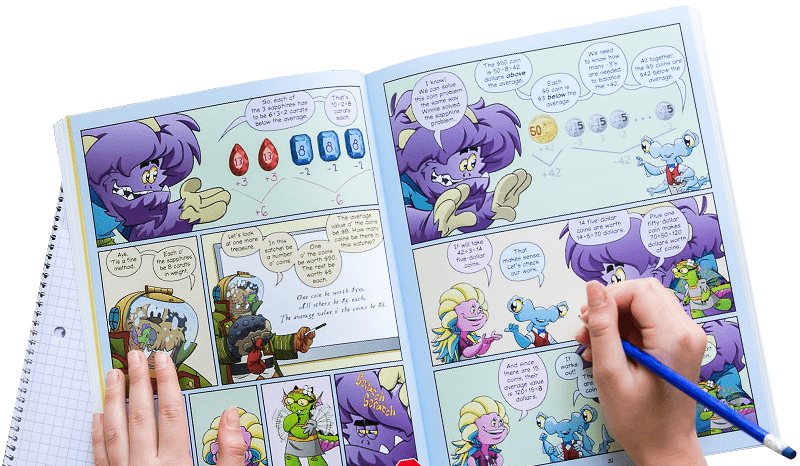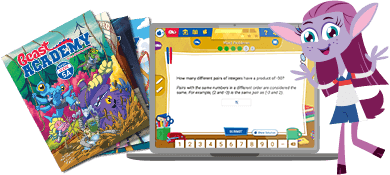Towers
Practice matching numbers to build block towers. Finish all your towers first to win!
Instructions
This game uses the deck you made in our Number Deck activity. (Or see Variations if you don't have a Number Deck.) You'll also need blocks, paper cups, or anything that can be stacked to build a tower. Remove the zeros from your Number Deck, leaving only 1-10, and separate out the numeral cards from the rest.
Each player picks 5 numeral cards and lays them out face up. Shuffle the rest of the cards and place them face down in a draw pile.

Take turns flipping over the top card of the draw pile. As you flip over a card, say the number out loud. The player with that number as one of their towers takes the card and uses it to add a level to their tower.

As the numeral cards are covered up, it gets harder to match the cards.

The first player to complete all of their towers wins! (And maybe gets demolition rights?)
Don't forget: it's Beast Academy Playground, not Beast Academy Study Hall. Change the rules, be silly, make mistakes, and try again. The Variations and Learning Notes are here for you if you want to dive deeper, but not all of them apply to learners of every age. The most important thing is to have fun.
What do you think of this activity?
We're always looking to improve. Submit your feedback to us below.
- Number Deck or other playing cards
- blocks or something else stackable
- recognizing numbers
- counting
- K.CC.B.4
- K.CC.B.5
- K.CC.C.6

Ready to level up?
Keep problem solving with Beast Academy’s full math curriculum for students ages 6–13. Check out our captivating comic book series and immersive online platform.
LEARN MOREBring problem-solving to your classroom
Keep your entire class engaged with a full book and online math curriculum, for students ages 6–13. 98% of teachers say they’re satisfied with Beast Academy.
LEARN MORE



Ready to level up?
Keep problem solving with Beast Academy’s full math curriculum for students ages 6–13. Check out our captivating comic book series and immersive online platform.
LEARN MOREBring problem-solving to your classroom
Keep your entire class engaged with a full book and online math curriculum, for students ages 6–13. 98% of teachers say they’re satisfied with Beast Academy.
LEARN MORE
Sign up to be notified when new videos are released.















































